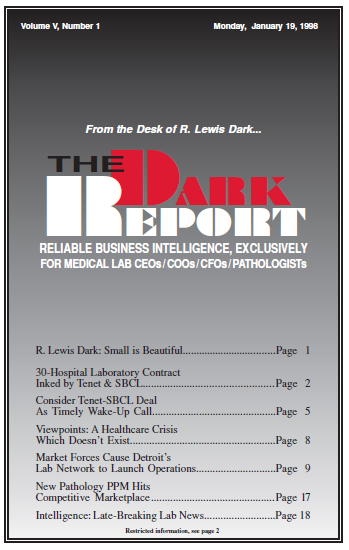CEO SUMMARY: Expect the Tenet-SBCL contract announcement to trigger similar deals during the next 18 months. Competition and the need to gain economic advantage will drive some hospital CEOs to turn their laboratories over to commercial laboratory partners. The number of such joint ventures and contract management projects will increase rapidly. BY ALL MEASURES, the …
Consider Tenet-SBCL Deal As Timely Wake-Up Call Read More »
To access this post, you must purchase The Dark Report.


